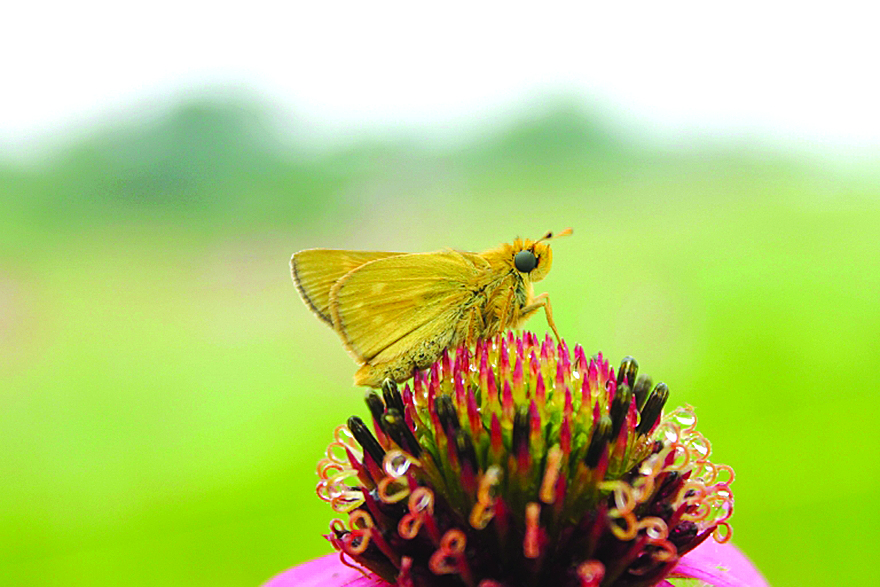Dakota skipper butterflies reintroduced to Glacial Lakes State Park
News | Published on July 24, 2023 at 1:57pm CDT

The Minnesota Department of Natural Resources and the Minnesota Zoo recently released hundreds of Dakota skipper butterflies back to the prairie at Glacial Lakes State Park.
“Dakota skippers were once common at Glacial Lakes State Park, but we haven’t seen them at the park since 2005,” said Cindy Lueth, DNR Parks and Trails northwest regional resource management supervisor. “Many hours and a variety of tools have been used to prepare the native landscape for the Dakota skipper reintroduction. We are thrilled to welcome back this endangered butterfly.”
Once common throughout much of Minnesota’s native tallgrass prairie, Dakota skippers have since vanished from nearly all sites in the state. It is now listed as an endangered species in Minnesota and threatened in the U.S.
The Dakota skipper can only survive in native prairie habitat and does not inhabit non-native grasslands, weedy roadsides, tame hay land or other habitats that are not remnant native prairie. Today, approximately 1% of native prairie remains in the state.
The Minnesota DNR’s Parks and Trails resource crew in the northwest region has been enhancing remnant native prairie sites at Glacial Lakes State Park for the reintroduction effort since 2018. Park staff harvested and planted seed from native prairie vegetation and hand-planted thousands of narrow-leaved purple coneflowers, a preferred nectar source of the skipper. The crew removed more than 250 acres of woody vegetation, conducted prescribed burns and has now introduced grazing as one of the tools used to manage prairie habitat for the butterfly.
The Minnesota Zoo, the DNR’s Parks and Trails Division, the U.S. Fish and Wildlife Service and The Nature Conservancy developed a unique conservation research partnership to help save the Dakota skipper and other Minnesota endangered prairie butterflies. Funding has been provided by the Minnesota Environment and Natural Resources Trust Fund, as recommended by the Legislative-Citizen Commission on Minnesota Resources and the Parks and Trails Legacy Fund.
“Helping these butterflies return to our prairies supports not only other wildlife but our quality of life,” said Dr. Erik Runquist, butterfly biologist at the Minnesota Zoo. “Our hope is to continue to build on successes and re-establish populations throughout the region.”
The Minnesota Zoo’s Pollinator Conservation Initiative(mnzoo.org/conservation/minnesota/saving-minnesotas-prairie-butterfly-heritage/) created the world’s first rearing and breeding programs for Dakota skipper (and Poweshiek skipperling) to help save those butterfly species from extinction.




